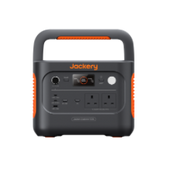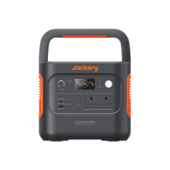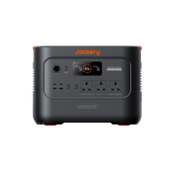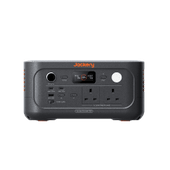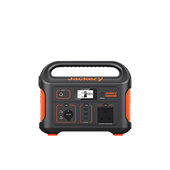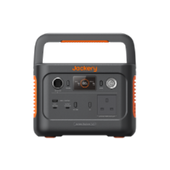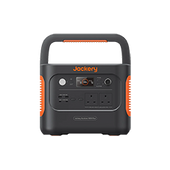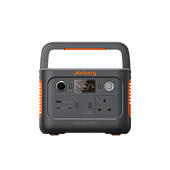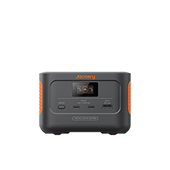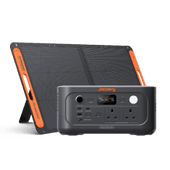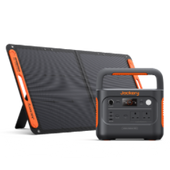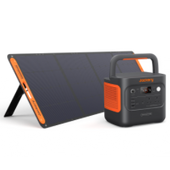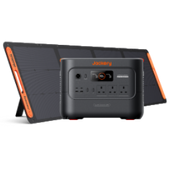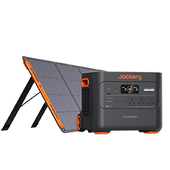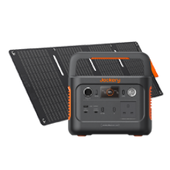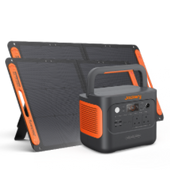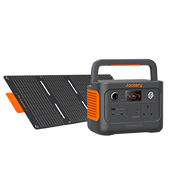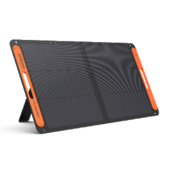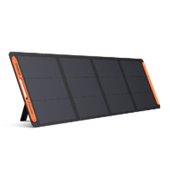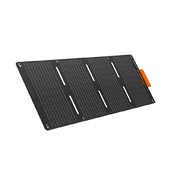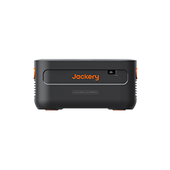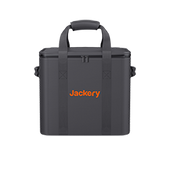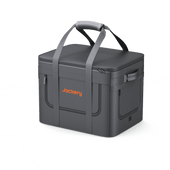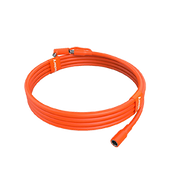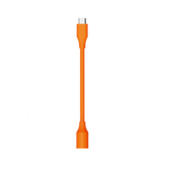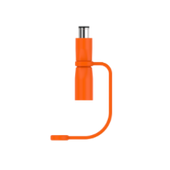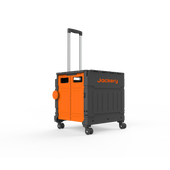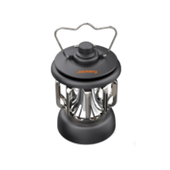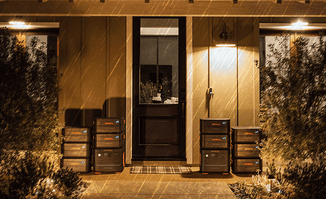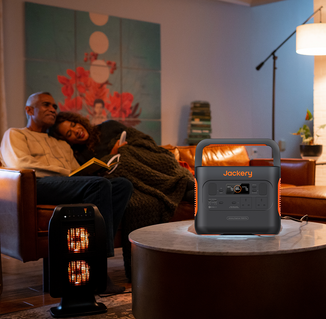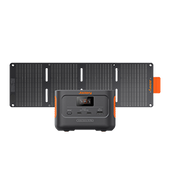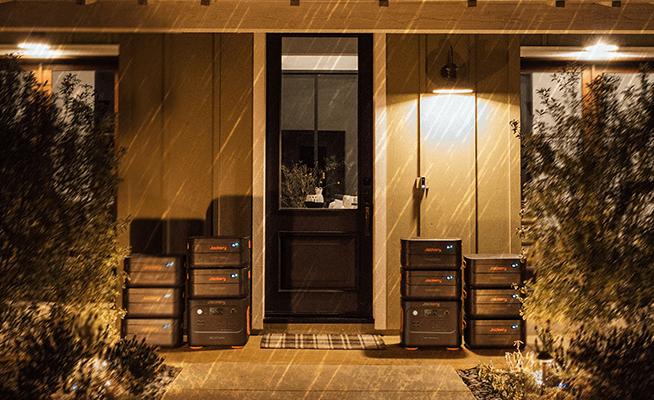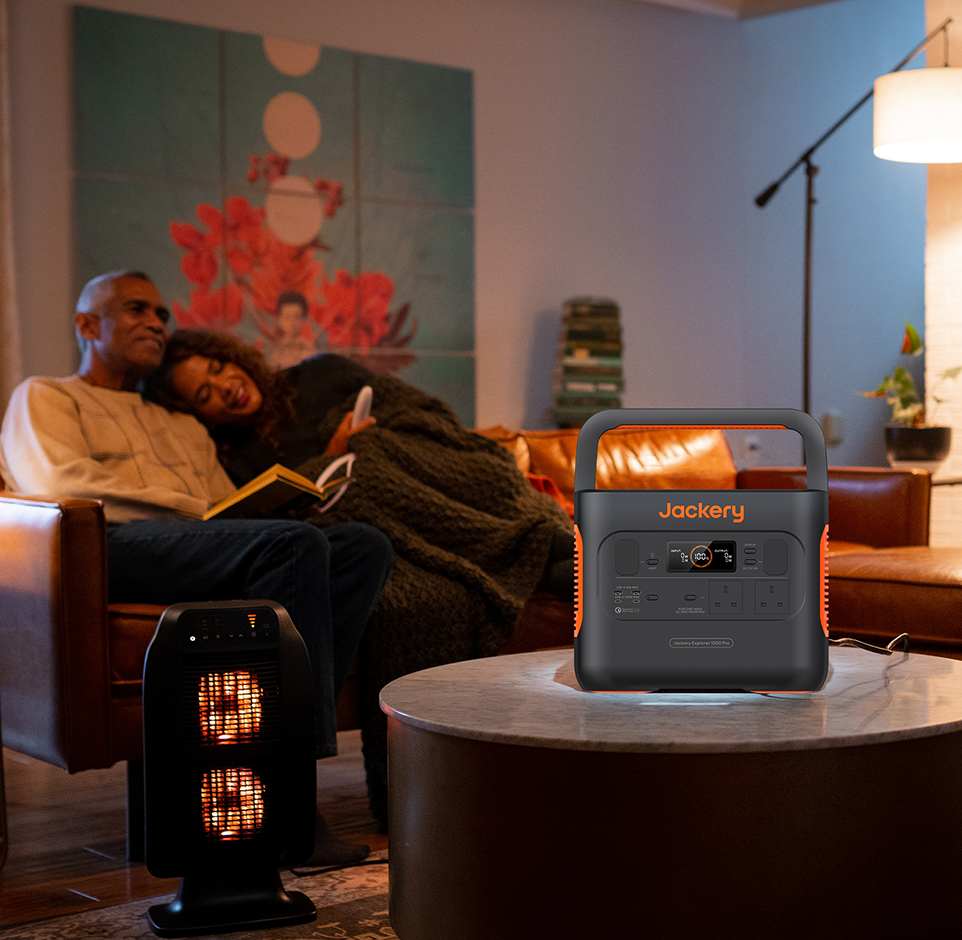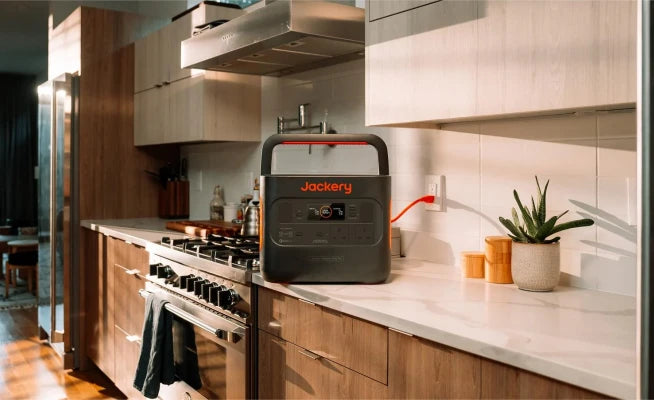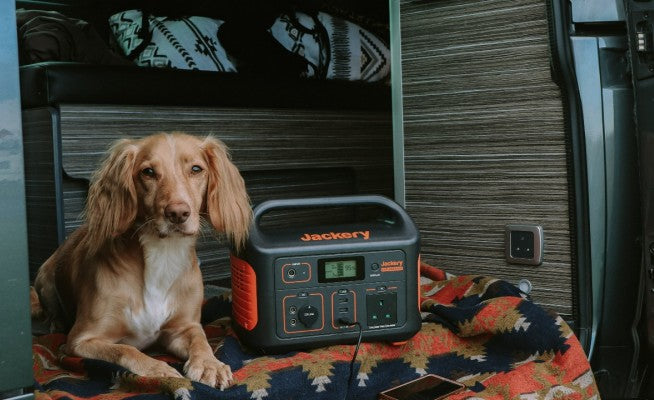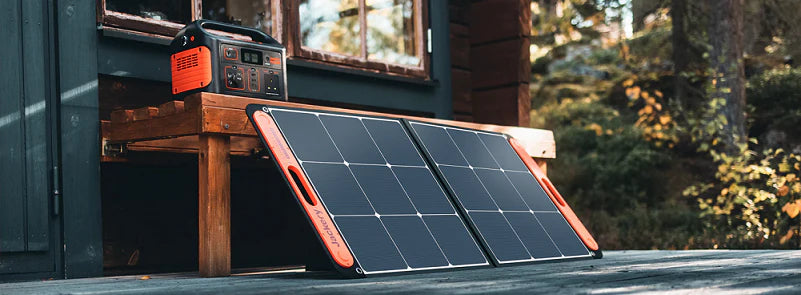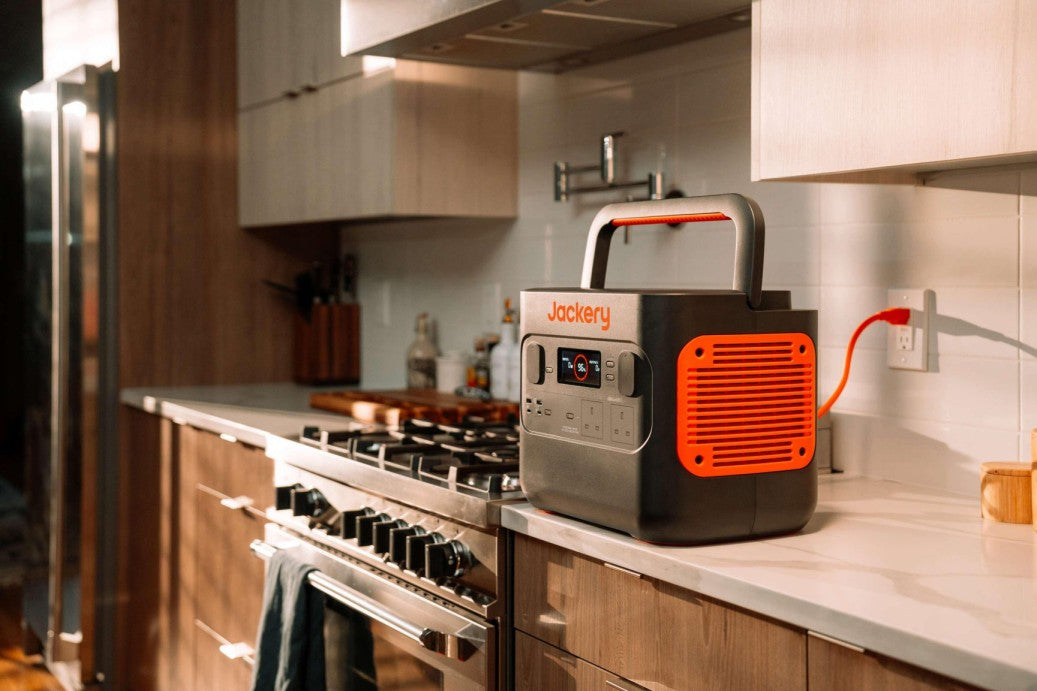Enjoy your RV, but prefer not to depend on electrical hookups or a noisy, odorous generator? Whether you're a full-timer or simply anticipating a weekend away from the hustle and bustle, solar power offers a source of free, clean energy for your RV—wherever you can locate a sunny spot to park.
There are two primary methods to implement solar power in your RV: Consider investing in permanent, roof-mounted panels directly connected to your RV's battery bank. Alternatively, choose portable solar panels that are easily assembled and disassembled at every campsite. Your financial plan, energy requirements, and additional considerations influence the appropriate selection.
This guide will show you everything about solar energy for RVs. Also, we recommend Jackery Solar Generator, a portable solar system that combines Jackery Solar Panels with a Portable Power Station to use solar energy for your RV.
|
Key Takeaways: |
|
- The power requirements for your RV will depend on your usage, the appliances you operate, and your travel destinations. - RV solar system mainly consists of four core parts: solar modules (solar panels), chargers, batteries, and inverters. - RV solar energy systems are divided into portable and permanent systems, each with unique advantages and applicable scenarios. - We recommend Jackery Solar Generator 2000 Plus and 1000 v2 portable solar systems for charging RV appliances outdoors. - l The costs of RV solar energy systems depend on the size and type of system selected, ranging from £200 to 4000 and more. |
Solar Energy for RVs Overview
Most RVs feature two distinct electrical systems that supply power to various equipment and appliances. Devices that connect to a standard wall outlet and high-energy appliances, such as air conditioners, operate on an alternating current (AC) system, similar to a conventional household electrical setup.
The AC system's devices operate when connected to an external power source, such as an electrical hookup at a campsite (shore power) or a generator.
The direct current (DC) system, powered by your RV's house battery, operates your lights, fans, water pumps, and other essential electronics. Your battery bank typically charges while your engine is running or connected to an external power source.
You can operate all electrical devices on both systems when connected to shore power. However, you're interested in boondocking and venturing into areas outside standard RV fee campsites. In that case, you'll rely on the power you can generate and store in your battery pack. That's where solar energy for RV plays a crucial role.
Components of an RV Solar Energy System
RV solar energy systems are off-grid photovoltaic power generation systems, also known as independent ones. It mainly consists of four core parts: solar modules (solar panels), chargers, batteries, and inverters. These components combine to convert sunlight into electrical energy, which is stored in batteries for various RV electrical appliances. The following are the four main components of RV solar systems:
|
Components of RV Solar System |
Function |
|
Solar panels |
It absorbs sunlight and converts it into electricity. |
|
Solar Charge Controller |
It regulates the output voltage and current of the solar panel. |
|
Batteries |
It stores solar panels for use when needed. |
|
It converts the direct current in the battery into alternating current, which is used by the RV's electrical appliances. |
Understand RV Solar Panel Watts
"Watts" indicates the power output that solar panels can generate. Most RV solar panels typically have a wattage between 100W and 400W. The required wattage is contingent upon your power consumption and travel preferences.
Consider the following important factors:
Daily Power Usage: Panels in the range of 100W to 200W suffice for a limited number of small devices such as lights and phone chargers. However, when powering larger appliances such as a fridge or laptop, you will require 300W or more.
Roof Space: Increasing your wattage requires additional panels, necessitating sufficient space on your campervan's roof. If your roof is secure, consider utilising more efficient panels that produce greater power with reduced surface area.
Sunlight Conditions: Panels generate a higher wattage output under optimal sunlight conditions. Fewer panels suffice in sunny regions, but you may need to increase your wattage in cloudier or shaded areas to fulfil your requirements.
Battery Capacity: Think about the amount of energy you wish to store. The greater the wattage produced by your panels, the quicker you can recharge your batteries, which is essential if you rely on high-powered devices or aim to maintain an off-grid lifestyle for extended periods.
MPPT or PWM Solar Charge Controller
Installing a solar panel on your campervan roof may appear simple, but the challenge lies in effectively managing the power it produces. Solar panels generate different current and voltage levels during the day, making connecting them directly to your batteries unsafe due to the risk of damage. This is where a solar charge controller is essential.
Consider the solar charge controller an intermediary connecting your panels to your batteries. It manages the power flow, guaranteeing that your batteries charge safely and efficiently. Selecting the appropriate controller is essential, as the wrong choice can lead to wasted solar energy.
Pulse Width Modulation (PWM): These are the most cost-effective options, though they are not as efficient, much like polycrystalline panels. They slowly decrease the power supplied to your batteries as they approach full charge, which may result in less efficient energy utilisation overall.
Maximum Power Point Tracker (MPPT): These options are preferred for most van configurations. MPPT controllers provide greater efficiency, supplying up to 30% more power to your batteries than PWM controllers. While they may be more expensive, the increase in performance justifies the cost, mainly when roof space is at a premium, and every watt is crucial.
In summary, MPPT controllers are the intelligent option for RVs. They enhance the output of your solar panels, providing more dependable power when you are off the grid.
How Does an RV Solar Energy System Work?
The working principle of an RV solar system is simple and efficient. Here are the steps of how an RV solar system works:
Step 1: The RV solar panels use photovoltaic (PV) cells to convert sunlight into electricity.
Step 2: The electricity generated by the solar panels is then sent to the charge controller, which regulates the power flowing into the battery bank to ensure that it is not overcharged.
Step 3: The battery bank stores the electricity for later use, powering the lights, appliances, and other devices in the RV.
Step 4: When the appliances need to be used, the DC power in the battery is converted to AC power by the inverter, which is used by the appliances.
Therefore, RVs can rely on solar systems to achieve self-sufficiency even in the wild, away from the power grid.

How Much Solar Power Does an RV Need?
Determining the solar energy for your RV involves several critical factors—it's not a universal solution. The power requirements for your RV will depend on your usage, the appliances you operate, and your travel destinations. Consider these points before you begin:
Your Electricity Usage: Please provide a comprehensive list of the devices and appliances you intend to utilise. Consider the various devices such as lights, refrigerators, phone chargers, laptops, and other electronic gadgets. Every unit possesses a power rating, typically quantified in watts. Sum these values to understand your daily energy requirements.
|
Appliances |
Power Consumption |
Hours per Day |
Watt-Hours (Wh) per Day |
|
LED light bulbs (x2) |
20 W |
6 hours |
120 Wh |
|
TV |
60 W |
2 hours |
120 Wh |
|
Portable refrigerator |
75 W |
24 hours |
1,800 Wh |
|
Microwave oven |
800 W |
15 minutes or 0.25 hours |
200 Wh |
|
Totals |
955 W |
32.25 hours |
2,240 Wh |
How Long You Will Be Off-Grid: Are you planning a weekend getaway or embracing a full-time life on the road? The more time you spend off-grid, the greater your solar power requirements will be. A weekend warrior may manage with a more compact setup, whereas full-time van lifers will require a more substantial arrangement.
Sunlight Availability: The availability of sunlight is influenced by your travel destination. Being in sunny areas most of the time allows for more power generation. Additional panels will be necessary to gather sufficient energy in cloudy or shaded areas.
Sun Elevation: As the sun ascends in the sky, the energy output of your panels increases. Being in areas closer to the equator is advantageous for solar energy. For instance, vacationing in southern Europe will produce more solar energy than exploring the Scottish North Coast 500. The sun ascends in the sky, often accompanied by reduced cloud cover.
Season & Climate: During summer, the days are longer, and sunlight is more abundant, which may reduce your need for solar power. During winter or in cloudy climates, your panels will generate reduced energy, indicating that a more extensive setup and more efficient panels may be necessary.
Battery Storage: Think about how much power you wish to store. Batteries provide a safeguard for overcast days or evening usage. Having additional storage enhances the versatility of your solar system. However, the greater your weight, the less you can carry and the more fuel you consume while travelling.
Roof Space: What is the available area on your RV's roof? This real estate restricts the number of panels you can install, directly affecting the power you can generate. Solar panels provide an excellent return on investment, so if you plan to spend considerable time off-grid, we suggest using your roof space to install as many solar panels as possible.
By considering these factors, you can more accurately determine the solar power requirements for your RV. Every setup is distinct, so it's essential to discover the perfect equilibrium for your lifestyle and travel arrangements.
Types of Solar Energy Systems for RVs
With the popularity of RV travel, solar power supply systems have become the first choice of many RV enthusiasts because of their clean, efficient and convenient characteristics. RV solar energy systems are divided into portable and permanent systems, each with unique advantages and applicable scenarios.
Solar panels are the core component of RV solar systems. Currently, there are a variety of solar panels available on the market:
|
Solar Panel Types |
Features |
|
Monocrystalline Silicon Panels |
High photoelectric conversion rate (usually 21% to 23%) Stability and long life Aesthetics High manufacturing cost |
|
Polycrystalline Silicon Panels |
Low photoelectric conversion rate (about 18%) Low manufacturing cost Good stability Difference in appearance |
|
Thin-Film Solar Panels |
Highly flexible Lightweight Low conversion efficiency (typically 6% to 10%) Low cost |
Permanent RV Solar System
Permanent RV solar systems are designed to achieve a more stable and lasting power supply. They usually include solar panels and related components fixedly installed on the RV's roof. Permanent RV solar panel systems are designed for those who try to maximise the use of solar energy, not only for charging equipment but also for operating appliances such as refrigerators, microwaves, coffee machines, and even air conditioners.
Portable RV Solar System
Portable RV solar systems are popular for their flexibility and ease of use. Such systems usually include foldable solar panels and corresponding energy storage devices like lithium-iron phosphate batteries. You can connect the panels with wires and place them in the sunniest area around the RV. Portable RV solar systems are a good choice for RV enthusiasts who do not need a lot of electricity.

Furthermore, we recommend Jackery Solar Generator, which combines Jackery Solar Panels with a Portable Power Station to turn sunlight into electricity. Since the rooftop solar system needs professional installation and maintenance, the portable solar system is easier to use and carry. Whether at an RV camping site or in the wild, a Jackery Solar Generator can be your best outdoor companion for providing a sufficient power supply.
|
Features of Permanent RV Solar Systems |
Features of Portable RV Solar Systems |
|
• Strong power supply capacity • Good stability • Simple maintenance • Integrated design • Long-term benefits |
• High flexibility • Strong scalability • Easy to install and maintain • Efficient charging • Diverse application scenarios |
Which is better, a permanent RV solar system or a portable RV solar system?
When choosing between a portable RV solar system and a permanent RV solar system, you need to make comprehensive considerations based on your actual needs and budget:
Frequency of Travel and Power Demand
It is recommended that users who travel frequently and have high power demands choose a permanent system to ensure sufficient power supply. A portable system is more flexible and economical for users who travel occasionally or have low power demands.
RV Type and Space
RVs have different roof areas and carrying capacities, so choose the right system type and specifications. For example, a small RV may be more suitable for portable or permanent systems.
Budget and Return on Investment
Permanent systems require a higher initial investment, but their stability and efficiency can yield a higher return on investment in the long run. Portable systems require a lower initial investment and are suitable for users with limited budgets.
Jackery Solar Generators for RVs
When evaluating solar panels for campervan travel, one must not overlook generators. They provide supplementary energy that is not directly utilised by solar panels. They employ lithium batteries that provide electricity during power interruptions or travel.
In contrast to other generators, this model eliminates the necessity for supplementary fuel, rendering it an exceptional choice for sustainable energy solutions. This consequently reduces the frequency of repairs, enhancing maintenance and upkeep.
Jackery Solar Generators possess rapid solar charging capabilities, enabling the power stations to be charged within a few hours. The solar panels utilise monocrystalline silicon solar cells and have an exceptional efficiency rate of 25% to facilitate rapid charging. The power stations can also be recharged via car chargers or wall plugs for further convenience.
|
Appliances |
Working Hours |
|
|
Jackery Solar Generator 1000 v2 (1070Wh) |
Jackery Solar Generator 2000 Plus (2-12 kWh) |
|
|
Refrigerator (360W) |
2.5H |
4.8-28.3H |
|
Computer (200W) |
4.3H |
8.5-51H |
|
Phone (10W) |
85.6H |
174-1020H |
|
Lighting (50W) |
17.1H |
34-204H |
|
Coffee Maker (550W) |
1.7H |
3.2-18.5H |
Jackery Solar Generator 1000 v2
Firstly, we introduce Jackery Solar Generator 1000 v2, an Explorer 1000 v2 portable power station combo with SolarSaga 100W or 200W solar panels. We will introduce each component in detail to better fit your RV.
 Explorer 1000 v2 Capacity: The Explorer 1000 v2 Portable Power Station provides an impressive 1500W output, 50% greater than earlier models. It efficiently supplies power to high-demand devices such as refrigerators, kettles, and portable heaters. Equipped with USB-A/C connections and dual PD charging up to 100W, it can simultaneously charge several devices (phone, laptop), rendering it the ideal companion for all your power requirements.
Explorer 1000 v2 Capacity: The Explorer 1000 v2 Portable Power Station provides an impressive 1500W output, 50% greater than earlier models. It efficiently supplies power to high-demand devices such as refrigerators, kettles, and portable heaters. Equipped with USB-A/C connections and dual PD charging up to 100W, it can simultaneously charge several devices (phone, laptop), rendering it the ideal companion for all your power requirements.
Recharging with Ease: The Emergency Charge Mode, activated via the app, enables the Explorer 1000 v2 Portable Power Station to achieve a full charge in under one hour, providing essential power backup when the battery is depleted in an RV. Moreover, charging from 0% to 100% within two hours via an AC wall outlet prolongs battery longevity.
Camping & RVing without Noise: Experience peace with its nearly silent operation, maintaining noise levels below 22dB while charging your devices. Compared to other traditional generators, this one is more suitable for home use and has sufficient power capacity.
Solar Panel Efficiency: Achieve reduced weight and enhanced performance with a cutting-edge solar system. The 100W bifacial high-efficiency solar panel, featuring a conversion rate of up to 25%, integrates advanced IBC technology with a sleek black design, enhancing power generation while minimising weight.
Jackery Solar Generator 2000 Plus
Jackery Solar Generator 2000 Plus is more powerful and versatile than 1000 v2 for an RV. It is a solid portable solar energy solution that pairs Explorer 2000 Plus with SolarSaga 200W solar panels and delivers outstanding performance. With its impressive capacity and powerful output, this device can support the operation of essential RV appliances for weeks, even for certain large appliances.

Expandable Powerhouse: The Jackery Solar Generator 2000 Plus enables the addition of extra battery packs, increasing the capacity from 2 kWh to an impressive 12 kWh, thereby significantly satisfying your power needs. This solar product has a remarkable output of 3000W, almost all essential appliances indoors or outdoors.
Multiple Recharging Methods: The Explorer 2000 Plus stands out as a groundbreaking add-on battery pack that offers the convenience of recharging through solar panels, wall outlets or carports. This feature increases versatility, boosts charging efficiency, and shortens charging time. Also, it can be taken indoors safely compared to other traditional generators.
Safety is Priority: ChargeShield is Jackery's advanced fast charge technology, featuring 62 protective mechanisms, 12 protective algorithms, and four types of physical safety protection. This technology uses a unique stepped variable-speed charging algorithm to enhance safety and extend battery pack lifespan by 50%.Solar Panel Conversion: Jackery solar panels generate more lifetime energy due to their industry-leading solar conversion efficiency of up to 25%. Our solar panels generate 50% more energy in low-light circumstances than conventional solar panels (PERC) and exhibit superior spectrum responsiveness.
How to Install an RV Solar Energy System?
The RV solar system can provide a stable power supply and extend the equipment's service life through proper installation and regular maintenance, bringing more convenience and comfort to RV travel. The following is the installation and maintenance guide for the RV solar system.
The following are the installation steps for solar energy system for RV:

Step 1: Plan Your Solar Setup
Begin by measuring your roof space to determine the number of panels that can be accommodated. Consider any roof elements that could influence the positioning, such as fans or vents. According to the shape of your roof, choose between rigid or flexible panels.
Step 2: Choose Your Mounting Way
There are two primary alternatives for mounting:
|
RV Solar Panel System Mounting |
|
|
Z-Brackets |
These are affixed to the ceiling and are optimal for rigid panels. They are robust and maintain the panels near the roof for an elegant appearance. |
|
Corner Mounts |
These are adhered to the ceiling and are suitable for those who wish to avoid drilling holes. They increase the elevation of your configuration while functioning effectively with rigid panels. |
Step 3: Connect Your Solar Panels Series or Parallel
When configuring your RV solar panels, you can connect them in series, parallel, or a combination. Every method offers its benefits, so grasping the distinctions will assist you in selecting the most suitable choice.
Connect in Series: Connecting solar panels in series increases their voltage while keeping their current constant. This increases the total voltage of your solar array, which is beneficial since your panels must generate a minimum of 14V to charge a 12V battery effectively.
Connecting solar panels in series allows for an extended period each day during which your panels can efficiently charge your batteries, even in low-light conditions. Another advantage is utilising thinner cables, as the current remains constant. This can lead to reduced installation costs and a more straightforward setup.
Connect in Parallel: Linking your solar panels in parallel boosts the current while maintaining the same voltage. Once your panels achieve the necessary voltage of 14V or higher, the increased current leads to a greater flow of charge into your batteries, which is advantageous.
A significant benefit of a parallel setup is its ability to withstand shading. If one panel is shaded, it will not negatively impact the performance of the other panels, making it perfect for those who frequently park in partially sunny locations.

Step 4: Install the RV Solar Panels
There are different methods to install RV solar panels. Installation of stiff panels utilising z-brackets:
1) Affix the brackets to the panels.
2) Place the panel on the roof and delineate the holes.
3) Excavate the apertures, apply sealant, and secure the panel with bolts, assisted by a companion.
Installation of stiff panels utilising corner mounts:
1) Position the mounts and panels on the roof, delineate their locations, and cleanse the surface.
2) Apply glue, allow it to cure, and fasten the panels by drilling through the mounting.
Installation of flexible panels:
Thoroughly cleanse the roof. Affix glue to the rear of the panels and secure them in position.
Step 5: Run the Cables
Make an opening in the roof for the cable entry gland, smooth the edges, and apply a protective coating. Guide the cables through the gland into the van, ensuring all connections are sealed with adhesive to avoid leaks. Ensure the cables are routed seamlessly from the panels to your charge controller (MPPT).
Step 6: System Debugging
After completing the installation, please debug the entire solar system to ensure stable and reliable power output and check that all equipment usually operates.
RV Solar Energy System Costs
The price of solar energy systems for RVs depends on the size and type of system selected. Here's a detailed breakdown:
Basic Setup (100W to 200W): This is perfect for brief excursions or limited power requirements. A basic small system costs £200 to £ 800.
Mid-Range Setup (200W to 400W): This is ideal for extended journeys or multiple devices. Expect an expenditure of £1000 or more.
Premium Configuration (400W and above): This is ideal for those embracing full-time van life with various devices and appliances. Allocate a budget of at least £4000.
These estimates pertain exclusively to solar panels. In addition to the panels, funds must be allocated for a charge controller, inverter, and batteries, representing the most significant expenses in a campervan solar system.
The cost of these additional items will range from a few hundred to several thousand pounds, depending on the capacity and quality of the components.
If you enjoy backcountry camping (living in places without electricity), such as beaches, city parks, state parks, and deserts, then a solar panel system is a key part of RV living.
Solar panels provide quiet power and minimise the need for noisy generators to charge batteries. In the UK, installing a solar system is wise for RV travellers concerned about the environment, such as those who travel long distances and camp.
Solar Energy for RVs FAQs
The following are the frequently asked questions about solar energy for RVs:
1. How many solar panels do I need for my RV?
To determine how many solar panels you need, determine how much energy you use daily. Please list all the electronics and tools you want to use and write down how much power they need in watts. As an example:
Light: 5 watts an hour times 5 hours (evening) = 25 watt-hours a day for LED lights
Fridge: 60 watts an hour times 24 hours is 1,440 watt-hours daily.
Phone Charger: 10 watts per hour times two hours (roughly) = 20 watt-hours per day
Laptop: 50 watts per hour times four hours (roughly) equals 200 watt-hours per day
That means the total amount of energy you use each day is:
25+1,440+20+200= 1,685 Wh per day.
Look at how many hours of sunlight there are on average where you're going. In a sunny area, you get five hours of peak sunlight daily. You'll need at least 326 watts of solar power to make 1,630 watt-hours of electricity (1,630 watt-hours / five sunlight hours = 326 watts).
To meet this need, you could use a 360W panel setup or a group of panels that add up to at least 326 watts. If you want to add more devices or need extra power for days when it's not as warm, go with a 400W or 500W setup.
2. Is a 100W solar panel enough for an RV?
A 100W solar panel suffices for basic energy requirements, including charging small electronics and operating several LED lights. However, it may be inadequate for substantial energy requirements, such as operating a refrigerator or heating system, particularly during prolonged off-grid durations.
3. How much solar power do I need to run my fridge on my RV?
Depending on the fridge's efficiency and the amount of sunlight in your area, you usually need at least 200W to 300W of solar power to run a small fridge. With this setup, there should be enough power to keep the refrigerator going constantly.
Final Thoughts
Installing a solar energy system on your RV is a great way to enjoy sustainable, off-grid electricity while travelling. Solar systems offer a sustainable and environmentally friendly solution to the RV's electricity needs, which saves money in the long run. However, installing a solar system in an RV requires proper planning, considering factors such as energy consumption needs. It ensures that the solar system is designed to meet the RV owner's specific needs and lifestyle.

